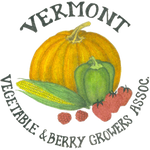| Common Name | Latin Name | Height | Soil Moisture and pH. | Sun Exposure | drought tolerance | Wildlife Value Notes | Pollinator Value Notes | Landscape Aalue |
| Aronia, Native (aka Black Chokeberry) |
Aronia sp. | up to 6' shrub | average, 6-8 pH. | full sun, tolerates partial shade. | tolerates wet soil | deer, rabbits, grouse | flower and fruits visited by pollinators and birds | abundant flowers, edible berries and red fall foliage |
| Balsam Fir | Abies balsamia | up to 70' conifer tree | average, acid <6 pH. | full sun to partial shade | deer, rabbits, grouse | Perfect for making holiday decorations such as wreathes | ||
| Basswood /American Linden |
Tilia americana | 60-80' deciduous tree | average, 6-8 pH. | full sun to partial shade | songbirds and small mammals | attracts many pollinators including bees, butterflies and fireflies | beautiful shade tree, leaves/flowers used in making tea | |
| Birch, paper | Betula papyrifera | up to 70' decidious tree | average, 6-8 pH. | full sun to partial shade | tolerates poor, dry soil but can be stressed by high temps | songbird habitat. browsed by deer, moose, porcupine, snowshoe hares, beavers and more. | larval host for Eastern Tiger Swallowtail Butterfly, Luna Moth and more. | interesting bark peels away in paper-like layers, can be used in basketry and other crafts. |
| Black Walnut | Juglans nigra | average 70', up to 150' | average, 6-8 pH. | full sun | drought tolerant | squirrels | larval host of several moths including luna moth | abundant edible nuts, the hulls of which can be used to make a natural dye. |
| Blueberry (highbush) | Vaccinum sp. | average 4-6' shrub | 4-5 ph | full sun, tolerates partial shade | birds and mammals | attract bees, butterflies, and other pollinators | we all love blueberries! | |
| Blueberry (lowbush) | Vaccinum sp. | average 1-2' shrub | 4-5 ph | full sun | birds and mammals | attract bees, butterflies, and other pollinators | we all love blueberries! | |
| Cherry, Black | Prunus serotina | up to 60' deciduous tree | average, 6-8 pH. | full sun | birds and mammals | attracts many pollinators and is a host plant to many butterfly caterpillars including Eastern Tiger Swallowtail, Viceroy, Spring Azure and more. | wonderful tree prized for its lumber in woodworking. | |
| Chokecherry | Prunus virginiana | up to 30' shrub/small tree | average, 6-8 pH. | full sun | birds as well as large and small mammals use this as a food source. Great wildlife habitat for many species. | attracts butterflies and other pollinators. | pretty, dense clustes of flowers in the spring and the fruit can be made into preserves. | |
| Comfrey |
Symphytum officinale native to Europe but naturalized in North America |
2-3' perennial | average, 6-8 pH. | full sun to part shade | tolerant to drought and clay soil | largely pollinated by bumblebees | extremely cold hardy, used as a mulch, also helps break up compacted soils. | |
| Cranberry, Highbush American | Viburnum sp. | 8-15' shrub | average to wet soil, acidic 6 pH. | full sun to partial shade | Berries eaten by deer, moose, foxes, raccoons, chipmunks, squirrels, skunks, mice, rabbits, grouse and some songbirds. | Creates a nice privacy screen, and the fruit can be used to make a delicious sauce. nice purple-red fall color in leaves. | ||
| Cranberry (lowbush) | Vaccinum macrocarpon | 6" low evergreen shrub | average to wet, acidic 4-6 pH | full sun | berries eaten by birds and small mammals. | attracts many species of pollinators including several species of specialized bees. | A wonderful groundcover for acidic soils. make your own cranberry sauce! | |
| Dogwood, Pagoda | Cornus alternifolia | up to 25' shrub/small tree | average to wet, acidic <6 pH. | full sun to partial shade | low drought tolerance | provides food and habitat for many species of wildlife | host plant to many species of butterflies and the blooms attract several types of specialized bees. | Very attractive shrub with horizontal branching and subtle yellow flowers that turn to dark colored berries. |
| Dogwood, Red Osier | Cornus sericia | up to 8' shrub | average to wet soil, 6-8 pH. | full sun to partial shade | provides food and habitat for many species of wildlife | larval host to butterflies (including Spring Azure), flowers attract specialized bees and other insects. | The bright red colored branches add vibrant color to winter landscapes, also great for basketry. | |
| Dogwood, Silky | Cornus amomum | 6-10' shrub | average to wet soil, acidic <6 pH. | full sun to partial shade, tolerates close to full shade. | provides food and habitat for many species of wildlife | larval host to butterflies (including Spring Azure), flowers attract specialized bees and other insects. | Great to plant by streams to help with erosion control. | |
| Elderberry, Native | Sambucus canadensis | up to 12' shrub | average to wet soil, 5-8 pH | full sun to partial shade | prefers wet but well drained soil | food and nesting habitat for birds. fruit also eaten by many mammals. | butterflies and hummingbirds attracted to blooms. Host plant to cecropia moth. | elderberries can be collected and turned into an immune-boosting syrup. |
| Flowering Raspberry | Rubus odoratus | canes up to 6' shrub | average moisture, 5.5 - 8 pH. | full sun to part shade | avoid heavy clay soil | beneficial to songbirds and mammals | attracts native bees and butterflies | showy pink/purple flowers followed by a red tasty berry. |
| Hazelnut, American | Corylus americana | up to 15' shrub | average to wet, 6-8 pH. | full sun | nuts are eaten by many birds and mammals including foxes and bears | attracts butterflies | tasty hazelnuts, makes a great hedge or wind-breaker | |
| Hazelnut, Beaked | Corylus cornuta | up to 15' shrub | average to wet, acidic <6 pH. | full sun to partial shade | nuts are eaten by many birds and mammals including squirrel and deer | attracts butterflies | cold hardy and disease resistant shrub with edible nuts encased in interested husk resembling a birds beak. | |
| Jerusalem Artichoke | Helianthus tuberosus | 6' perennial | average, 6-8 pH. | full sun to partial shade | avoid heavy clay soil | birds attracted to seedheads | attracts butterflies | bright yellow sunflowers with edible tubers |
| Juneberry/Serviceberry | Amelanchier canadensis | up to 15' shrub/small tree | wet to dry, 6-7pH | full sun to shade | prefers well drained soil | The fruits are eaten by songbirds and both small and large mammals, first fruits of the season for birds returning from the south | attracts butterflies and other insects. Host plant for the Red-Spotted Purple Butterfly and Viceroy Butterfly. | very early flowers welcome in spring, tasty red berries. |
| Maple, Red | Acer rubrum | 60' deciduous tree | average to wet, 6-8 pH. | full sun to partial shade | prefers well drained soil | seeds enjoyed by many species of birds. important food source for grey squirrels. | An important early food source for bees and other pollinators | Beautiful red fall foliage, can be tapped in the spring like a sugar maple. |
| Maple, Sugar | Acer saccharum | 60-70' (up to 120') deciduous tree | average moisture, 6-8pH. | full sun to partial shade | intollerant of compacted soil and high temperatures | seeds eaten by birds and small mammals. Tree cavities used by some birds for nesting. Deer, moose, and porcupine browse. | attracts bees, butterflies, moths and other pollinating insects. | Make your own maple syrup! |
| Mountain Ash, American | Sorbus americana | 30' deciduous tree | moist, acidic <6 pH. | full sun to partial shade | favorite browse for deer and moose | bright red ornamental berries | ||
| Oak, Bur | Quercus macrocarpa | 55' deciduous tree | deep sandy to clay soils | full sun to partial shade | sweetest of the acorns with low tannic acid, widely enjoyed | intersting cork-like bark, edible acorns can be used to make a flour | ||
| Oak, Red | Quercus rubra | 75' deciduous tree | average, 5-7 pH. | full sun | squirrels deer, turkey, mice, voles, and other mammals and birds | long lived tree, prized for its strong durable lumber. | ||
| Oak, Swamp White | Quercus bicolor. | average 60' deciduous tree | average to wet, acidic 5-7 pH. | full sun | prefers wet soil but tolerant of heat and drought | rapid growing and long-lived tree with sweet acorns (less tannins than some other species). | ||
| Plum, Native American | Prunus americana | 8 to 20' small tree/shrub | average moisture, 6-8pH. | full sun to partial shade | Excellent food source and habitat for birds and mammals | attracts many types of pollinators and is a host plant to several native moths and butterflies | abundant fruit can be harvested and turned into jams or dried. | |
| Speckled Alder | Alnus rugosa | up to 20' shrub | prefers wetter areas but does ok in dry sites | full sun | drought intolerant | important food source and nesting habitat to many species of birds including red-winged blackbirds, alder flyatchers, Wilson's warblers and more. | host plant to several species of butterflies and moths. | Nitrogen fixing shrub great for preventing soil erosion in wet areas and streambanks. |
| Virginia Creeper | Parthenocissus quinquefolia | vine | average moisture, 6-8 pH. | full sun - shade | berries eaten by songbirds, makes a good thick screen and cover for birds quickly, red fall foliage | beautiful red color in the fall, a great alternative to non-native english ivy. | ||
| White Pine | Pinus strobus | up to 80' conifer tree | average moisture, acidic <6 pH. | full sun to partial shade | tolerant to a wide range of soil conditions | important food and habitat source for many birds and mammals including bears, porcupines and rabbits | although it is wind pollinated, it still attracts butterflies, moths, and other pollinators | Tall lovely pinetree with soft needles that come in clusters of 5. |
| Wild Raisin / Nannyberry | Viburnum lentago | 15-25' shrub/small tree, outstanding red and purple autumn foliage colors and pelican- shaped buds through winter and spring | average, 6-8 pH. Prefers dryer sites. | full sun to partial shade | drought tolerant | waxwings, rough grouse, thrashers, chipmunks, squirrels | host to several native moth caterpillars | plentiful white flowers growing in umbels, edible berries, and interesting shaped buds that resemble a bird. |
| Willow, Native | Salix sp. | 10-20' shrub | prefer wet sites, 5-8 pH. | full sun | Avoid planting by septic systems or other water pipes as the roots will gravitate to them | Excellent for riparian habitats, helps avoid soil erosion from river banks. | support several secies of specialized bees | Wonderful for soil erosion. cute, fuzzy catkins in the spring add a nice touch to bouquets. great for basketmaking. |
| Winterberry | Ilex verticillata | 5-10' shrub | average to wet soil, <6 pH. | full sun to partial shade | tolerant once well established | many species of birds and some mammals. poisonous to humans. | male and female plants cross-pollinated by bees. (you'll need both male and female plants to produce any berries) | lovely ornamental red berries that hand on through much of the winter. |
| Witch Hazel | Hamamelis virginiana | 15' shrub | average, 5-7 pH. | full sun to shade | avoid droughty sites | rough grouse, white tailed deer | rare shrub that flowers in the fall looking like golden yellow fireworks | |
| Sources: | ||||||||
| University of Maine Cooperative Agriculture Extension | University of North Carolina Extension | |||||||
| University of Vermont Agricultural Extension | Plantnative.org "Native Plant List for New Hampshire, Vermont and Maine" | |||||||
| University of Minnesota Extension | Cornell University Woody Plants Database https://woodyplants.cals.cornell.edu/ | |||||||
Ecological Benefits of Native Plants Guide
Customer Service/Sales Representative
Assisting customers in person, by phone and/or by email, as well as supporting field staff with occasional tasks such as watering, potting, harvesting and more.
Fruit Tree Nursery Assistant
Fulfilling orders, tree digging, planting, mulching, harvesting and so much more.
How to Apply
Please send a brief cover letter, resume and three references by email to: elmorerootsishiring@gmail.com
Applications accepted until position is filled.
No phonecalls please.
Join our working "on-call" list
Think you’d enjoy occasionally working with Elmore Roots but can’t commit to a whole season? We are sometimes in need of a few extra hands to help with digging trees, potting plants, harvesting fruit, and other odd jobs. Click on the link to learn more.






